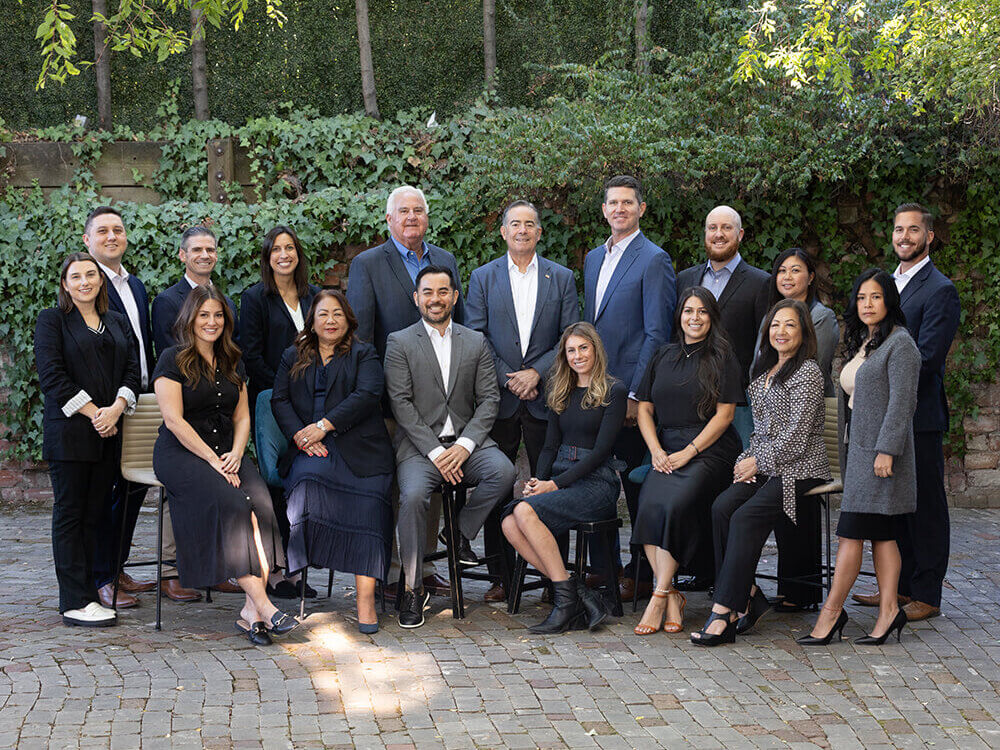Retirement isn’t what it used to be.
Once upon a time, it was relatively straightforward and cookiecutter. You hit 65, collected a pension, and settled into a life of leisure.
Today’s high-achieving professionals aren’t necessarily excited for a hard stop. They’ve spent decades solving problems, honing skills, leading teams, and cultivating networks — why should that suddenly end?
For many individuals, the prevailing retirement model is broken. It assumes you want to trade in your laptop for a set of golf clubs. It pushes rigid, age-based milestones that might not fit your timeline. It tells you to save endlessly, only to struggle later with the idea of shutting off the faucet.
But what if we reframed retirement as a sandbox-like period where you can redefine what work looks like on your terms?
Whether that means consulting, launching a passion project, investing in something new, or simply stepping back from the grind — retirement isn’t a finish line. It’s a transition.
We call it Life After Work.
And it starts by rethinking everything you thought you knew about retirement.
Why Traditional Retirement Is Outdated
If the traditional retirement model worked for everyone, we wouldn’t be having this conversation.
It was designed for a different era — one where pensions were plentiful, career paths were linear, and lifespans were shorter. It’s ill-formatted for today’s high-achievers who are still curious, still driven, and still interested in making an impact.
So why is the conventional approach failing? Several reasons.
Not Everyone Earns Fixed, Predictable Income
The formula used to be simple: Stop working. Collect Social Security. Withdraw from your savings at a steady, predictable rate.
Except what happens if you don’t stop working completely?
Many modern retirees still earn income through consulting, business ventures, board memberships, or personal projects. These variable income streams don’t fit neatly into the standard retirement mold.
How do you time withdrawals when you have unpredictable earnings?
How do you optimize taxes when your income fluctuates?
How do you invest when you’re not following a strict drawdown schedule?
The old model assumes a solidified nest egg. Life After Work is more fluid — meaning financial strategies need to be, too.
Conventional Retirement Ages Are Rigid
Retirement planning has long centered on several age-based thresholds:
- 62 — The earliest you can collect Social Security (at a reduced rate).
- 65 — Medicare eligibility kicks in.
- 73 — Required minimum distributions (RMDs) begin.
Who’s to say your journey will match these milestones?
In all likelihood, if you keep working in some capacity, it won’t. This creates both opportunities and complications:
- Delaying Social Security can increase your benefits, but how does this factor into (and impact) the rest of your wealth if you’re still working?
- Medicare eligibility at 65 is helpful, but what if you need coverage before then?
- RMDs force withdrawals at 73 even if you don’t need them yet, creating potential tax inefficiencies.
The traditional framework assumes everyone stops working on schedule. To blaze a new trail, financial strategies need to be customized — not dictated by government timelines.
The Psychological Shift Is Overlooked
Most retirement plans address the financial transition. What about the psychological one?
For some, retirement sounds like a permanent vacation — until they get there. Then reality sets in:
Work was a built-in structure. What happens when your days are wide open?
Work provided mental engagement. Where will you find that same challenge?
Work created connections and relationships. How do you stay socially engaged?
Alas, money alone doesn’t make for a fulfilling retirement.
If you’re hardwired to build, improve, and otherwise achieve, a sudden lack of purpose can be jarring. That’s why so many retirees find themselves restless, searching for what comes next.
The Never-Ending Pursuit of “Enough”
Retirement planning tends to prioritize one goal: save as much as possible. While that’s sensible on the surface, it often feeds into a circular conundrum: how much is enough?
By the time professionals reach their 50s or early 60s, they’re often in their highest-earning years. Walking away from a lucrative career feels like leaving money on the table.
“One more year won’t hurt.”
“Why not maximize my peak earning years?”
“I’ll quit when I hit [insert arbitrary number] in savings.”
Contrary to what people tell themselves, many already have enough. They just don’t realize it.
The accumulation mindset can lead people to work far longer than necessary not because they need to, but because they’re afraid to stop. A fundamental tenet of Life After Work is financial flexibility — ensuring your wealth supports your life, not the other way around.
What Is Life After Work?
Life After Work is a shift in thinking — a concept acknowledging that work, in some form, doesn’t have to end. It can evolve into something more fulfilling, adaptable, and aligned with personal values and goals.
That could mean:
- Consulting or freelancing on their own terms, maintaining a connection to their industry without the 9-to-5 (or longer) grind of full-time work.
- Launching a business and finally tackling an idea that’s been simmering on the back burner.
- Mentoring or giving back, leaning on decades of expertise to support younger cohorts.
- Investing time into personal passions, whether that’s writing, travel, the arts, or whatever else interests you.
Naturally, there’s a lot of variability with these life paths. While some people embrace a hands-off retirement, others prefer to stay engaged and redefine work. Fortunately, there’s no single “right” way to approach Life After Work.
The Life After Work Archetypes
To better convey how modern retirees typically transition into their next phase, we’ve identified five Life After Work archetypes. These are not mutually exclusive; some may fit into multiple categories over time.
| Archetype | Description |
| The Career Extender | • Continues working part-time, consulting, or freelancing in their industry. • Seeks intellectual engagement and values showcasing their expertise without the corporate grind. • Often maintains professional networks and strategic involvement in select projects. |
| The Passion Pursuer | • Turns a long-time hobby or interest into a business or career. • May teach, write, create, or explore artistic endeavors. • Prioritizes personal satisfaction over financial gain but appreciates supplementary income. |
| The Entrepreneur | • Launches a new business or invests in a startup. • Views Life After Work as an opportunity to create something meaningful. • Usually driven by a desire to build a legacy or innovate within their field. |
| The Philanthropist/Mentor | • Focuses on giving back through volunteer work, mentoring, or serving on boards. • Finds fulfillment in guiding younger colleagues or contributing to community initiatives. • May engage in structured charitable giving or establish foundations. |
| The True Retiree | • Has achieved full financial independence and opts for a lifestyle of leisure and relaxation. • Spends time traveling, with family, or on personal pursuits without work-related commitments. • Could still explore some part-time or project-based work but without financial necessity. |
It’s worth mentioning that there’s nothing wrong with being a True Retiree. Choosing full retirement is a valid and satisfying option for many. In time, you may even progress to conventional retirement from one of these other archetypes. Either way, you aren’t facing a binary decision of “retire” or “not retire.”
How to Financially Prepare for Life After Work
When you enter Life After Work, the goal is to structure your finances to sustain your ideal lifestyle and adapt to whatever comes next. The transition requires careful planning across multiple financial dimensions, from cash flow to investments to taxes.
While everyone’s path looks different, most people go through the same core steps when preparing for this phase:
Step 1: Establish Your Readiness
Many professionals work longer than necessary because they don’t realize they’ve already reached financial independence. Before making any major decisions, take stock of your total assets, expected income streams, and projected expenses to determine whether you have enough to support your ideal lifestyle.
Step 2: Plan for Variable Income and Spending
Since Life After Work often includes recurring income from consulting, investments, or part-time work, your spending plan should be adaptable — some years may involve higher earnings, while others may need to dip into savings. Maintaining cash reserves and using a dynamic withdrawal strategy helps balance income fluctuations while preserving long-term investments.
Step 3: Optimize Your Tax Strategy
Taxes are a guaranteed variable in any form of retirement, but they’re arguably even more prevalent in Life After Work.
For instance, as you continue earning, you’ll be less reliant on savings or other sources of income like Social Security. Consequently, you can probably afford to delay claiming; the longer the delay (up until age 70), the higher your benefit. While a higher benefit certainly isn’t a bad thing, it does establish a higher income floor for the rest of your life — which, of course, factors into your annual tax liability, especially once you start factoring in RMDs.
Strategic withdrawals from tax-deferred accounts (IRAs, 401(k)s) or converting to Roth IRAs during lower-income years can help minimize long-term tax burdens. Either way, defining a tax plan for this stage of your life is crucial.
Step 4: Adjust Your Investment Strategy
As you prepare for Life After Work, it’s important to evaluate your asset allocation. With continued earnings, you could adopt (or maintain) a relatively more aggressive risk profile, with a higher mix of growth-oriented investments to help compound your retirement savings.
However, liquidity is still imperative, especially if your Life After Work ventures involve upfront capital. An emergency fund and cash reserves ensure you don’t need to liquidate investments in a down market.
Step 5: Account for Healthcare and Long-Term Security
For those stepping away from full-time work before Medicare eligibility at 65, securing alternative healthcare coverage is an essential step. Exploring ACA marketplace plans or utilizing an HSA for tax-free medical expenses can help bridge the gap. Additionally, planning for long-term care or unexpected health costs helps protect you from any surprise, disruptive medical bills.
Step 6: Stress-Test and Adapt
Downturns, family needs, rising health care costs, or evolving personal goals may require adjustments over time. Stress-testing your plan now against different scenarios — such as a market crash, increased spending, or extended longevity — can help avoid stress later.
Retirement Clarity Starts Now
Life After Work is a deep, multifaceted concept — one that’s difficult to define in a single blog post. That’s why we created an eBook that explores the transition to Life After Work in greater detail: Retirement Redefined: How to Gauge Your Readiness for Life After Work.
You can download your free copy here:
Leaving your job and phasing into the next stage of life is not an easy decision. If you have concerns or lingering doubts, you’d hardly be the first person to question if now is the right time.
Our goal at BEW is simple: To help you step into this next phase with the utmost confidence.
A conversation is the best way to start.
No pressure, no obligations — just clarity on where you stand and where you could go from here.
Schedule a free consultation with Burton Enright Welch, and we’ll start mapping out your Life After Work, together.
Get the BEW Newsletter Direct to Your Inbox
Stay informed with timely perspectives and market insights from the BEW Invest team.



